The London of George VI, 1937

The London of George VI, 1937
The London of George VI.
J.M. Dent & Sons Ltd., London. 1937
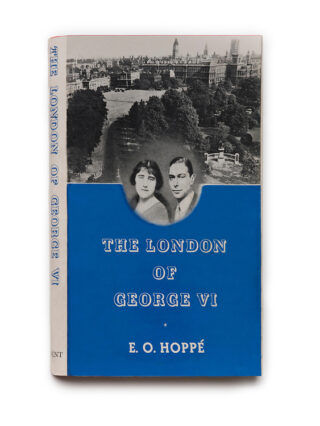

The London of George VI, 1937
The London of George VI.
J.M. Dent & Sons Ltd., London. 1937

The London of George VI, 1937

A Camera on Unknown London, 1936
A Camera on Unknown London.
J.M. Dent & Sons Ltd., London. First edition 1936

A Camera on Unknown London, 1936

The Image of London, 1935
The Image of London.
Chatto & Windus, London. 1935

The Image of London, 1935

Round the World with a Camera, 1934
Round the World with a Camera.
Hutchinson and Co., Ltd. 1934

Round the World with a Camera, 1934

The Picture Guides: London, 1932
The Picture Guides: London.
Hale, Cushman & Flint, Boston / The Medici Society Limited, London. 1932

The Picture Guides: London, 1932
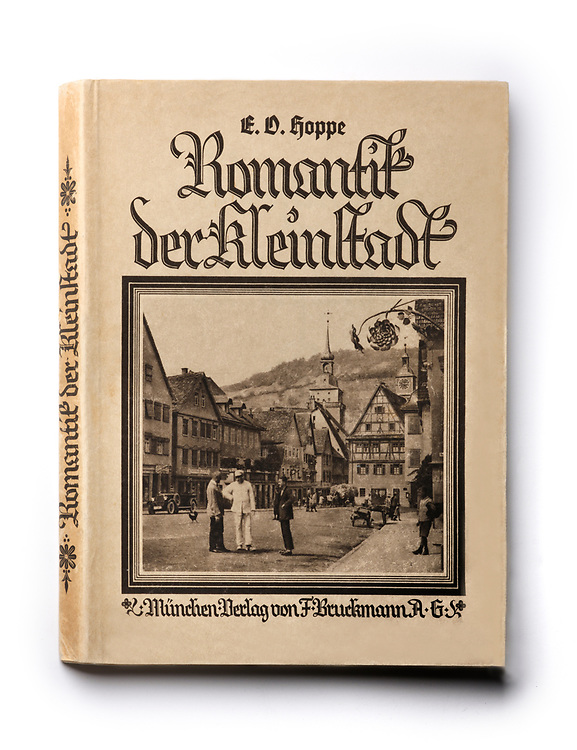
Romantik der Kleinstadt (Romantic Small Towns), 1932
Romantik der Kleinstadt (Romantic Small Towns).
Verlag F. Bruckman A.G., Munich. 1932
While photographing the factories of Germany’s industrial buildup in the late 1920s, Hoppé also documented its traditional small country towns and villages. It is clear in these photographs that the architecture of medieval Germany was then still abundant and that a suitably romantic view of Germany’s past could be found on a day trip to the country. Curiously, we see from Hoppé’s negative logs that after he spent one day photographing the ancient town of Hamlen (of Pied Piper fame), the next was spent in an entirely different reality, depicting the massive industry on Hamburg Harbor. As Hoppé saw it, Germany was both the old and the new. “Romantik der Kleinstadt” shows his affection for the traditional.

Romantik der Kleinstadt (Romantic Small Towns), 1932

Unterwegs (On the Road), 1932
Unterwegs (On the Road).
Ernst Pollak Verlag, Berlin. 1932
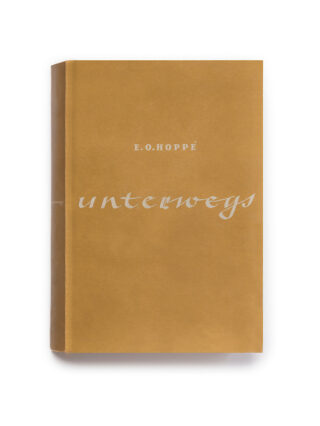
Unterwegs (On the Road), 1932

The Fifth Continent, 1931
The Fifth Continent.
Simpkin Marshall Ltd., London. 1931
By 1929 Hoppé had completed comprehensive photo-essays for several large volumes that he published on Britain, Germany, and the United States and was ready to head for destinations more exotic. Late that year he set out to photograph Australia. Intending to stay for only a few months, he found the country so culturally rich that he photographed continuously for almost an entire year. Hoppé’s intensive photo-documentation was the first time a single photographer had covered the entire geography of this vast continent. With his remarkable skill to show unique qualities of each of the subject that he photographed, Hoppé focused on those elements that codified Australia’s unique cultural identity as a multicultural nation. In 1931 Hoppé published photographs in a folio-sized book that he titled The Fifth Continent. Despite its 160 full-page letterpress plates the volume did not begin to span the epic national document that he had produced. As Hoppé explained in the introduction to the book “I would have included, indeed twice or thrice the number of pictures [and this] would still have been insufficient to show all that I could wish”. Perhaps it was the economic limitations of publishing a book in the height of the Great Depression but Hoppé noted with regret years later that he was unable to achieve the book on Australia that he wanted. In 2007 authors Graham Howe and Erika Esau published some 200 more of these remarkable images in E.O. Hoppé’s Australia but clearly it will take many more volumes to plumb the depth and riches of this 3,300 image archive that stands as a national treasure.

The Fifth Continent, 1931

Deutsche Arbeit (German Work), 1930
Deutsche Arbeit (German Work).
Verlag Ullstein, Berlin. 1930 Reversible dust jacket.
Published by Ernst Wasmuth, Berlin, under different simultaneously printed gravure editions, each identical for their 300 gravure-plate photographs and each variously titled for a different market: Picturesque Great Britain – The Architecture and the Landscape, and England: Baukunst un Landschaft or England. This publication, in both editions, is one of the most beautiful photographic books of the British Isles.
Each has their introductory text by Charles F.G. Masterman translated into the language of their respective markets. The term “Picturesque,” as used in the title of the English edition of the book, seems old fashioned today but in 1926 such description invited the audience to see artistic views of urban and country landscape. Hoppé’s photographic style is what we now call “Modernist.” Some of the characterizing aspects of this approach are found in Hoppé’s visualization of his subject where the picture subject matter may be a local pub but the two-dimensional geometric composition of its form is also intended by the photographer as an abstraction of shapes.

Deutsche Arbeit (German Work), 1930

Das Romantische Amerika (Romantic America), 1930
Das Romantische Amerika (Romantic America).
Atlantis, Berlin. 1930
In 1925 Hoppé received a commission from German publisher Ernst Wasmuth to make a photographically illustrated book of America. From late 1925 and for most of 1926 Hoppé traversed the continent several times making photographs for his book Romantic America to be published as part of the Orbis Terrarum series. Hoppé’s view of America was geographically expansive from the Brooklyn Bridge to the pueblos of New Mexico, from Hollywood back lots to Seattle lumber mills, and from the First African Baptist Church in Savannah to the wheat farms of Utah. Wasmuth’s commission required that Hoppé photograph scenes primarily without people in them so that the pictures would remain current in their appearance even as fashion changed. Presumably Wasmuth wanted the book to have a long shelf life. Not one to pass up an opportunity, while on his travels Hoppé did photograph many different “types” of Americans making an early and important studies that reveal a multi-cultural society attempting to connect across racial, cultural and economic differences.

Das Romantische Amerika (Romantic America), 1930
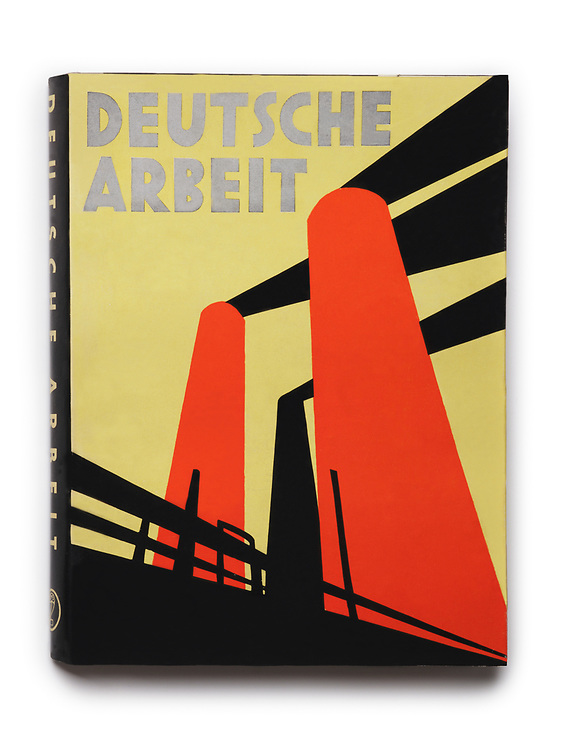
Deutsche Arbeit (German Work), 1930
Deutsche Arbeit (German Work).
Verlag Ullstein, Berlin. 1930 Reversible dust jacket.
Published by Ernst Wasmuth, Berlin, under different simultaneously printed gravure editions, each identical for their 300 gravure-plate photographs and each variously titled for a different market: Picturesque Great Britain – The Architecture and the Landscape, and England: Baukunst un Landschaft or England. This publication, in both editions, is one of the most beautiful photographic books of the British Isles.
Each has their introductory text by Charles F.G. Masterman translated into the language of their respective markets. The term “Picturesque,” as used in the title of the English edition of the book, seems old fashioned today but in 1926 such description invited the audience to see artistic views of urban and country landscape. Hoppé’s photographic style is what we now call “Modernist.” Some of the characterizing aspects of this approach are found in Hoppé’s visualization of his subject where the picture subject matter may be a local pub but the two-dimensional geometric composition of its form is also intended by the photographer as an abstraction of shapes.

Deutsche Arbeit (German Work), 1930

The Story of the Gipsies, 1929
The Story of the Gipsies.
by Konrad Bercovici, with 8 plates by E. O. Hoppé. London: Jonathan Cape, 1929.

The Story of the Gipsies, 1929

Fire Under the Andes: A Group of North American Portraits, 1927
Fire Under the Andes: A Group of North American Portraits.
Elizabeth Shepley Sergeant, with photographs by E. O. Hoppé. New York: Knopf, 1927.

Fire Under the Andes: A Group of North American Portraits, 1927

Romantic America, 1927
Romantic America.
B. Westermann Co., Inc., New York. 1927
In 1925 Hoppé received a commission from German publisher Ernst Wasmuth to make a photographically illustrated book of America. From late 1925 and for most of 1926 Hoppé traversed the continent several times making photographs for his book Romantic America to be published as part of the Orbis Terrarum series. Hoppé’s view of America was geographically expansive from the Brooklyn Bridge to the pueblos of New Mexico, from Hollywood back lots to Seattle lumber mills, and from the First African Baptist Church in Savannah to the wheat farms of Utah. Wasmuth’s commission required that Hoppé photograph scenes primarily without people in them so that the pictures would remain current in their appearance even as fashion changed. Presumably Wasmuth wanted the book to have a long shelf life. Not one to pass up an opportunity, while on his travels Hoppé did photograph many different “types” of Americans making an early and important studies that reveal a multi-cultural society attempting to connect across racial, cultural and economic differences.

Romantic America, 1927

Das Romantische Amerika (Romantic America), 1927
Das Romantische Amerika (Romantic America).
Ernst Wasmuth A.G., Berlin. 1927
In 1925 Hoppé received a commission from German publisher Ernst Wasmuth to make a photographically illustrated book of America. From late 1925 and for most of 1926 Hoppé traversed the continent several times making photographs for his book Romantic America to be published as part of the Orbis Terrarum series. Hoppé’s view of America was geographically expansive from the Brooklyn Bridge to the pueblos of New Mexico, from Hollywood back lots to Seattle lumber mills, and from the First African Baptist Church in Savannah to the wheat farms of Utah. Wasmuth’s commission required that Hoppé photograph scenes primarily without people in them so that the pictures would remain current in their appearance even as fashion changed. Presumably Wasmuth wanted the book to have a long shelf life. Not one to pass up an opportunity, while on his travels Hoppé did photograph many different “types” of Americans making an early and important studies that reveal a multi-cultural society attempting to connect across racial, cultural and economic differences.
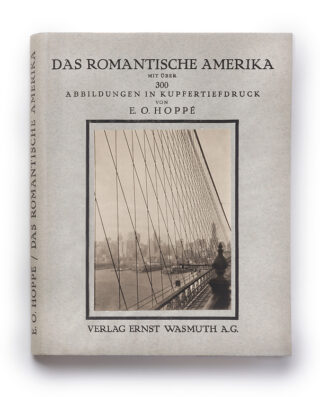
Das Romantische Amerika (Romantic America), 1927

England (also “Picturesque Great Britain”), 1926
England (also “Picturesque Great Britain”).
Verlag Ernst Wasmuth A.G., Berlin. 1926
Published by Ernst Wasmuth, Berlin, under different simultaneously printed gravure editions, each identical for their 300 gravure-plate photographs and each variously titled for a different market: Picturesque Great Britain – The Architecture and the Landscape, and England: Baukunst un Landschaft or England. This publication, in both editions, is one of the most beautiful photographic books of the British Isles.
Each has their introductory text by Charles F.G. Masterman translated into the language of their respective markets. The term “Picturesque,” as used in the title of the English edition of the book, seems old fashioned today but in 1926 such description invited the audience to see artistic views of urban and country landscape. Hoppé’s photographic style is what we now call “Modernist.” Some of the characterizing aspects of this approach are found in Hoppé’s visualization of his subject where the picture subject matter may be a local pub but the two-dimensional geometric composition of its form is also intended by the photographer as an abstraction of shapes.

England (also “Picturesque Great Britain”), 1926

Forty London Statues and Public Monuments, 1926
Forty London Statues and Public Monuments.
Methuen & Co., London. 1926
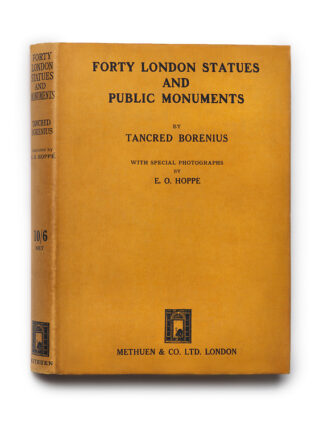
Forty London Statues and Public Monuments, 1926

London Types: Taken from Life, 1926
London Types: Taken from Life.
Text by W. Pett Ridge & pictures by E.O. Hoppé. Methuen & Co., Ltd., London. 1926

London Types: Taken from Life, 1926

A Collection of Photographic Masterpieces by E.O. Hoppé, 1925
A Collection of Photographic Masterpieces by E.O. Hoppé.
Exhibition Catalogue. Tokyo: Tokyo Asahi Shimbun Hakkojo, 1925

A Collection of Photographic Masterpieces by E.O. Hoppé, 1925

In Gypsy Camp and Royal Palace: Wanderings in Romania, 1924
In Gypsy Camp and Royal Palace: Wanderings in Romania.
With a preface by the Queen of Romania. Methuen & Co., Ltd., London. 1924

In Gypsy Camp and Royal Palace: Wanderings in Romania, 1924

To Rome on a Sunbeam, 1924
To Rome on a Sunbeam.
With Camera Studies by E. O. Hoppé. Wolverhampton: Sunbeam Motor Car Company Ltd., 1924

To Rome on a Sunbeam, 1924